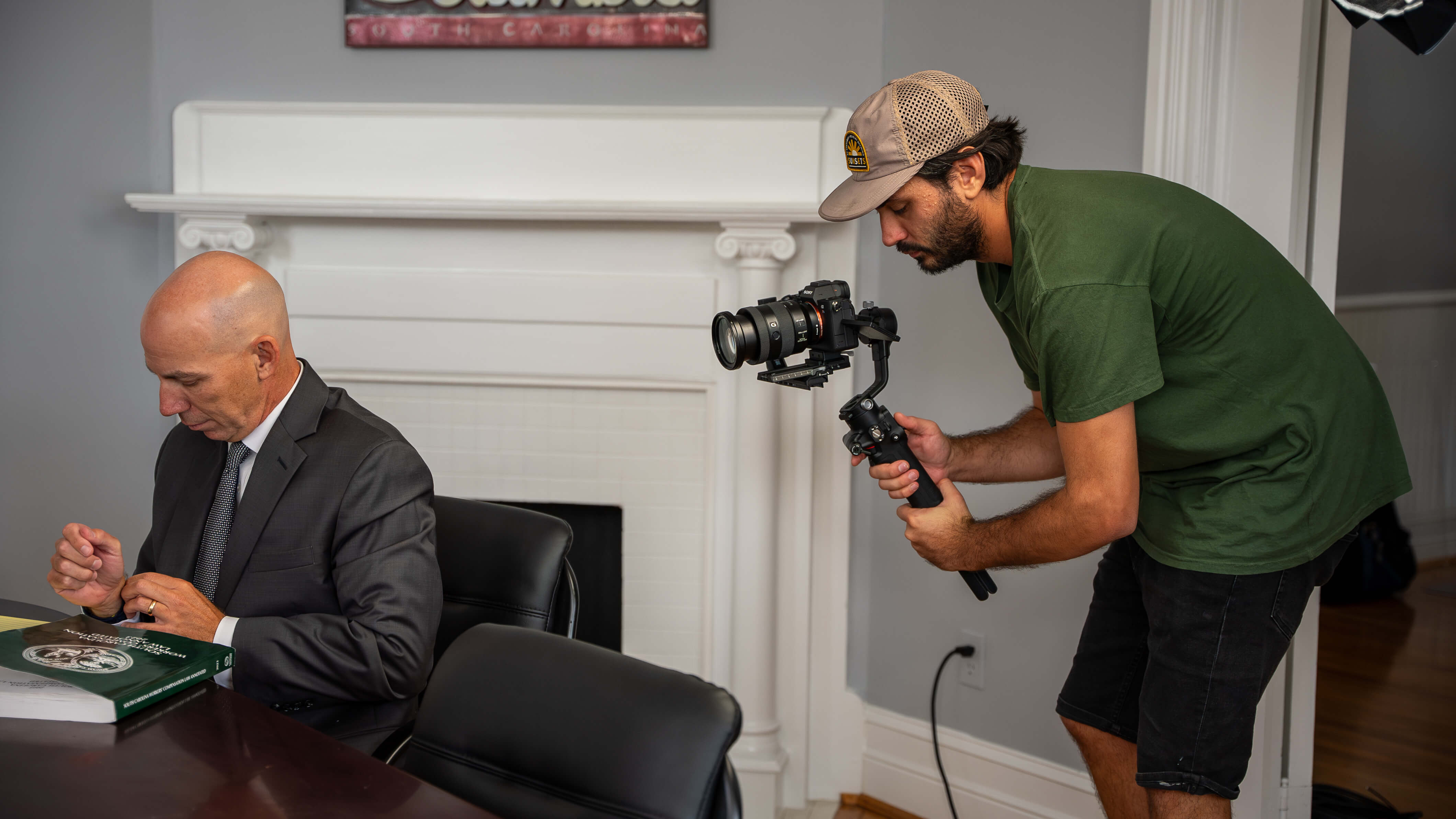When creating a film, visual storytelling techniques play a vital role in engaging your audience. Among these techniques, zoom and dolly (tracking) shots stand out for their ability to manipulate perspective and enhance the emotional or narrative impact of a scene. Whether you're zooming in for dramatic effect or using a dolly to explore a space, understanding how and when to use these techniques is crucial for any filmmaker.
In this blog, we’ll break down the art of zoom and dolly shots, explore their individual impact on visual storytelling, and offer insights into how to best utilize them.
What is a Zoom Shot?
A zoom shot involves adjusting the focal length of the camera lens to either magnify or reduce the size of the subject within the frame. It creates the illusion of movement, bringing the viewer closer to the subject (zooming in) or pulling them further away (zooming out).
This technique is commonly used in both documentaries and narrative films to emphasize emotions, actions, or particular details with precision. Rather than moving the camera itself, zooming simply changes the lens's focal length, creating a subtle or dramatic shift in the frame.
When to Use a Zoom Shot
-
Emphasizing Emotions or Actions: Zooming in on a character’s face during a critical moment can amplify the emotional intensity of the scene. Whether it’s joy, fear, or sorrow, the zoom draws the audience closer to the character’s inner world.
-
Highlighting Details: Zooms allow filmmakers to direct the viewer’s attention to specific elements within the frame, such as a critical object or a subtle gesture that might otherwise be overlooked.
-
Creating Transitions: Zooming out from a close-up shot to a wide shot can be a smooth way to transition between scenes, helping to re-establish the context and provide continuity in storytelling.
What is a Dolly Shot?
A dolly shot, on the other hand, involves physically moving the camera along a track or wheeled apparatus, allowing for smooth lateral, forward, or backward movement. Unlike zoom shots, dolly shots change the camera’s actual position, adding depth, motion, and a dynamic feel to the visuals.
This technique provides a much more cinematic experience, guiding viewers through the scene and immersing them in the action.
When to Use a Dolly Shot
-
Capturing Spatial Relationships: Dolly shots are perfect for showing the spatial dynamics between characters or objects. By moving through the scene, dolly shots help the audience understand the physical relationships within the environment, such as the distance between characters or the layout of a space.
-
Creating Cinematic Sequences: Dolly shots excel in scenes that require movement. For example, they work beautifully in scenes where you follow a character down a street or travel through a vast landscape, creating a seamless, continuous experience for the audience.
-
Establishing Atmosphere: The controlled motion of a dolly shot can add to the atmosphere of a scene. Whether it’s moving slowly through a room to build tension or gliding smoothly across a serene landscape, dolly shots can enhance the emotional tone of the story.
Zoom vs. Dolly: Which is Better?
Neither zoom nor dolly shots are inherently better than the other. Instead, each serves a specific purpose in visual storytelling.
-
Zoom shots offer immediacy and focus, ideal for emphasizing particular details or emotions within a scene. They’re especially useful when you want to shift the audience’s attention quickly and with precision.
-
Dolly shots provide a sense of spatial awareness and fluidity, allowing for smooth motion that helps to guide the audience through the story. This technique is great for capturing movement and exploring the environment in a dynamic way.
The key to using either technique effectively lies in understanding the desired effect for your scene.
What is the Difference Between a Zoom and a Dolly?
To further understand the distinction between zoom and dolly shots, let’s break it down:
-
Mechanism: A zoom shot involves adjusting the focal length of the camera lens, while a dolly shot physically moves the camera along a track or rig.
-
Effect: Zoom shots can feel more static and intimate since only the focal length is changing, bringing attention to the subject without altering the spatial relationship between the camera and the subject. Dolly shots, on the other hand, introduce dynamic motion into the scene, giving a more immersive and cinematic feel.
-
Application: Zoom shots are great for focusing on specific details or heightening emotional intensity. Dolly shots are perfect for adding depth, showing movement through space, or creating visual momentum.
Zoom or Dolly: Making the Right Choice
Ultimately, the decision between a zoom or dolly shot comes down to what you want the audience to feel and understand in a given scene.
-
Use Zoom Shots when you need to emphasize emotions, highlight key details, or transition between scenes seamlessly. A well-timed zoom can create an immediate emotional connection or direct the viewer’s attention with precision.
-
Use Dolly Shots when you want to explore spatial relationships, create smooth, cinematic movement, or immerse the audience in the environment. Dolly shots are especially effective for sequences that require a sense of motion and atmosphere.
Key Takeaways
-
Zoom Shots: Offer precision and intimacy, making them ideal for emphasizing emotions, actions, or specific details within a scene.
-
Dolly Shots: Provide fluidity and spatial awareness, guiding viewers through the narrative with cinematic grace.
-
Choosing Between Zoom and Dolly: The choice depends on the desired effect and narrative context. Each technique serves distinct purposes, so understanding when to use one over the other is crucial for enhancing your film’s visual storytelling.
By experimenting with both zoom and dolly shots, you can discover their unique strengths and how they can complement your storytelling vision. Whether you're capturing the raw emotion of a character or revealing the vastness of a landscape, the right shot can elevate your film’s impact. Keep these techniques in your toolkit, and use them creatively to engage your audience and tell your story in the most compelling way possible.













